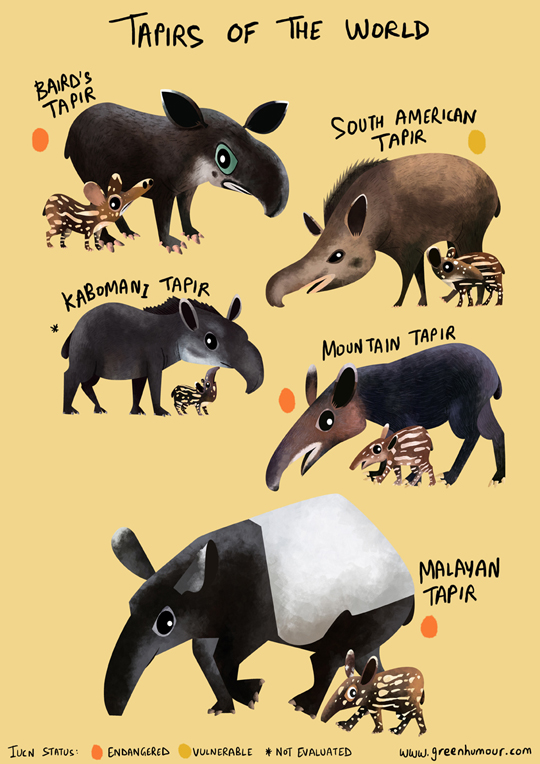Paleontologists have discovered fossil remains of two previously unknown mammals that lived in what is now British Columbia in Canada during the early Eocene, about 52 million years ago – a tiny hedgehog species named Silvacola acares and a tapir-type herbivore of the genus Heptodon.

Reconstruction of the early Eocene fauna that inhabited the rainforest around a northern British Colombia lake: Heptodon sp. drinks in the shallows, while the small hedgehog Silvacola acares stalks the green lacewing Pseudochrysopa harveyi in the foreground. Image credit: Julius Csotonyi.
Our planet has experienced many dramatic changes in climate since the dinosaurs went extinct around 66 million years ago.
The warmest period was the early Eocene, 50 to 53 million years ago. During this interval, mammal communities in what is today Canada and the United States were quite distinct from those of today.
“Within Canada, the only other fossil localities yielding mammals of similar age are from the Arctic, so these fossils from British Columbia help fill a significant geographic gap,” said Dr Natalia Rybczynski from the Canadian Museum of Nature, a co-author of a paper reporting the discovery in the Journal of Vertebrate Paleontology.

The fossils of Silvacola acares, along with fossils of Heptodon sp., were recovered from a unique fossil site known as Driftwood Canyon Provincial Park that likely was a rainforest environment during the early Eocene. Most of the fossil-bearing rocks at Driftwood Canyon were formed on the bottom of an ancient lake and are well-known for their exceptionally well-preserved leaves, insects, and fishes. But no fossils of mammals had ever before been identified at the site.
The hedgehog Silvacola acares (specific name means ‘tiny forest dweller’) was only 5 to 6.5 cm long, roughly the length of an adult thumb.
“It is quite tiny and comparable in size to some of today’s shrews,” said Dr Jaelyn Eberle of the University of Colorado Boulder, the first author on the study.

Left: Silvacola acares, a right maxilla. Right: Heptodon sp., a right dentary fragment. Image credit: Jaelyn J. Eberle et al.
Silvacola acares may have fed on insects, plants and perhaps seeds.
The other mammal discovered at the site, Heptodon sp., is an ancient relative of modern tapirs, which resemble small rhinos with no horns and a short, mobile trunk or proboscis.
Dr Eberle said: “Heptodon sp. was about half the size of today’s tapirs, and it lacked the short trunk that occurs on later species and their living cousins. Based upon its teeth, it was probably a leaf-eater, which fits nicely with the rainforest environment indicated by the fossil plants at the site.”

“The discovery in northern British Columbia of an early cousin to tapirs is intriguing because today’s tapirs live in the tropics,” she said.
“Its occurrence, alongside a diversity of fossil plants that indicates a rainforest, supports an idea put forward by others that tapirs and their extinct kin are good indicators of dense forests and high precipitation.”
Dr David Greenwood of Brandon University in Manitoba, who is the senior author of the study, said: “Driftwood Canyon is a window into a lost world – an evolutionary experiment where palms grew beneath spruce trees and the insects included a mixture of Canadian and Australian species. Discovering mammals allows us to paint a more complete picture of this lost world.”
Source: sci.news








